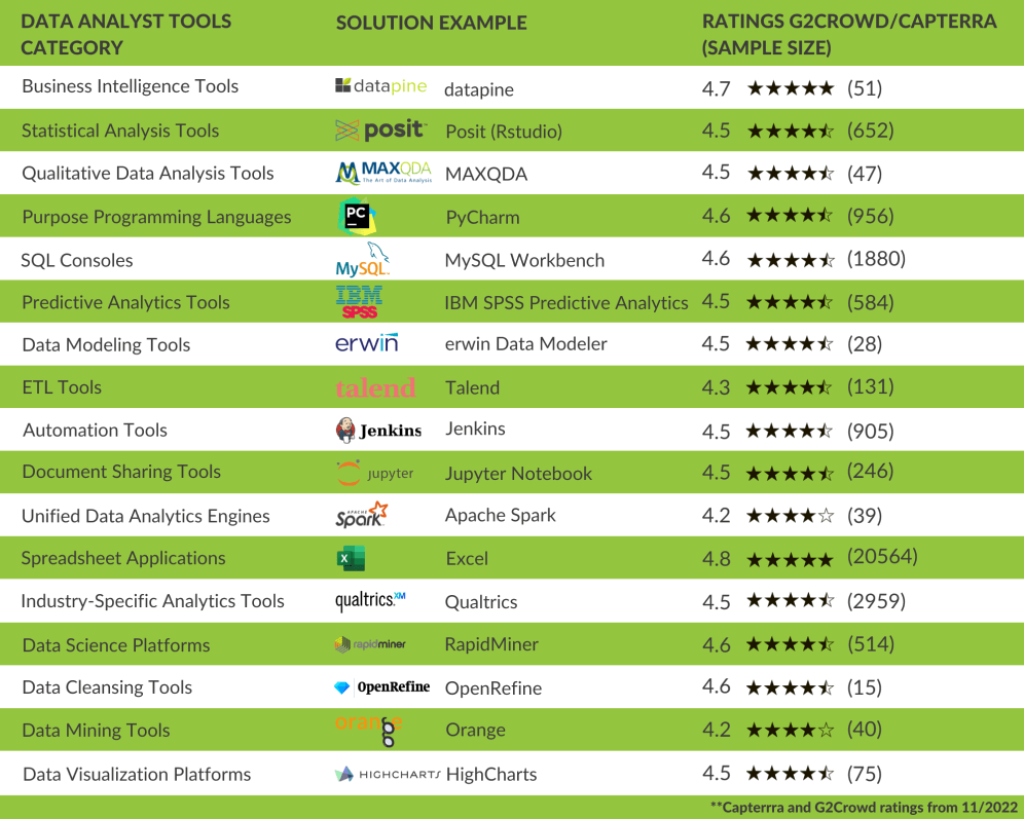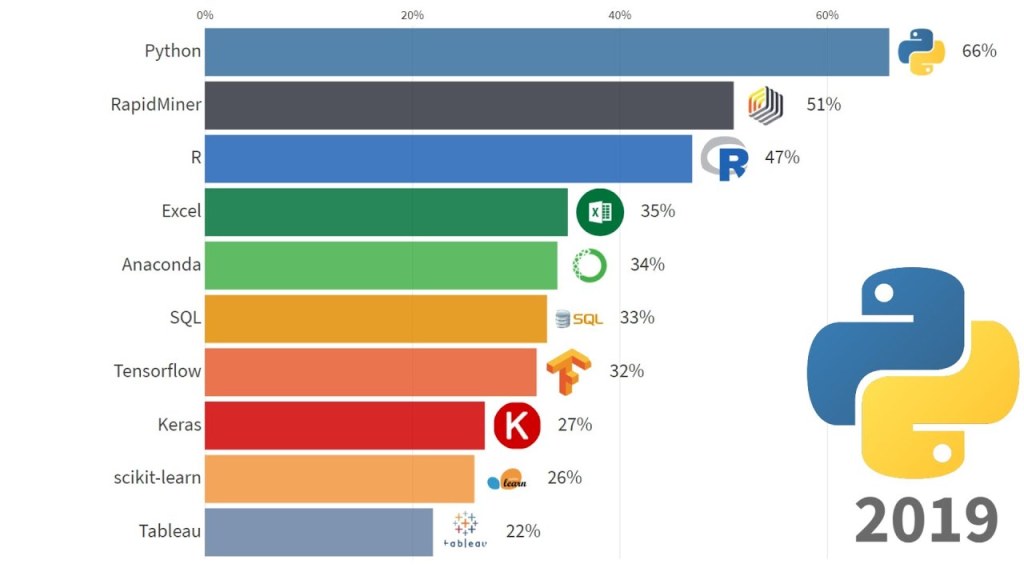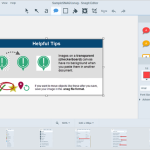Unleash The Power Of Data With Cutting-Edge Software Tools For Data Science!
Software Tools for Data Science
Introduction
Welcome, readers! In this article, we will explore the world of software tools for data science. In today’s data-driven world, the demand for professionals who can extract valuable insights from vast amounts of data has skyrocketed. To meet this demand, various software tools have been developed to assist data scientists in their work. Whether you are a beginner or an experienced practitioner, understanding and utilizing these tools is essential for success in the field of data science. In this article, we will provide a comprehensive overview of the different software tools available, their features, and how they can benefit data scientists.
2 Picture Gallery: Unleash The Power Of Data With Cutting-Edge Software Tools For Data Science!


Data science involves the extraction, analysis, and interpretation of large and complex datasets to uncover valuable insights and make informed decisions. To accomplish this, data scientists rely on a range of software tools that facilitate data collection, cleaning, analysis, visualization, and modeling. These tools not only save time and effort but also enable data scientists to work more efficiently and effectively. Let’s explore some of the most popular software tools used in data science today.
Top Software Tools for Data Science
Python
🐍 Python is a versatile programming language that has gained immense popularity in the field of data science. Its simplicity, readability, and extensive libraries make it a favorite choice among data scientists. Python offers powerful tools such as NumPy, pandas, and scikit-learn, which provide efficient data manipulation, analysis, and machine learning capabilities.
R

Image Source: datapine.com
📊 R is another widely used programming language specifically designed for statistical analysis and visualization. Its rich ecosystem of packages, including ggplot2 and dplyr, make it a go-to tool for data scientists. R’s flexibility and extensive statistical functions make it ideal for exploratory data analysis and statistical modeling.
SQL
🔍 Structured Query Language (SQL) is a programming language used for managing and analyzing relational databases. SQL enables data scientists to extract, manipulate, and aggregate data from databases efficiently. Its ability to handle large datasets and perform complex queries makes it an essential tool for data exploration and analysis.
Tableau

Image Source: ytimg.com
📊 Tableau is a powerful data visualization tool that allows data scientists to create interactive and visually appealing dashboards and reports. With its drag-and-drop interface and extensive visualization options, Tableau enables data scientists to communicate insights effectively and tell compelling data stories.
TensorFlow
🧠 TensorFlow is an open-source library primarily used for machine learning and deep learning applications. It provides a flexible architecture for building and training neural networks, making it a popular choice for data scientists working on complex modeling tasks. TensorFlow’s scalability and support for distributed computing make it suitable for handling large-scale datasets.
Apache Hadoop
🐘 Apache Hadoop is an open-source framework that allows data scientists to store and process large datasets in a distributed computing environment. Hadoop’s distributed file system and MapReduce paradigm enable efficient parallel processing of data, making it ideal for big data analytics. Hadoop also integrates with other tools like Apache Spark and Hive to provide a comprehensive data processing ecosystem.
Jupyter Notebook
📓 Jupyter Notebook is an interactive web-based tool that allows data scientists to create and share documents containing live code, visualizations, and explanatory text. Its integration with various programming languages, including Python and R, makes it a versatile tool for data exploration, analysis, and collaborative work.
What is Software Tools for Data Science?
Software tools for data science refer to applications, libraries, and frameworks that assist data scientists in various aspects of their work. These tools provide functionalities such as data collection, cleaning, analysis, visualization, and modeling, making the data science workflow more efficient and effective. By leveraging these tools, data scientists can extract valuable insights from large and complex datasets, enabling better decision-making and problem-solving.
Who Uses Software Tools for Data Science?
Data scientists, data analysts, statisticians, and researchers extensively use software tools for data science. These professionals work across various industries, including finance, healthcare, e-commerce, and technology, among others. Additionally, organizations that rely on data-driven insights to enhance their operations and gain a competitive edge also utilize these tools. As the demand for data science continues to grow, the usage of software tools in the field will only increase.
When to Use Software Tools for Data Science?
Software tools for data science are used throughout the entire data science lifecycle. From data acquisition and preprocessing to exploratory analysis, modeling, and visualization, these tools are utilized at different stages of the process. Whether you are a beginner learning the basics of data science or an experienced practitioner tackling complex problems, these tools offer the necessary functionalities to streamline your workflow and achieve accurate results.
Where to Use Software Tools for Data Science?
Software tools for data science can be used across various domains and industries. They find applications in finance, marketing, healthcare, social sciences, and many other fields where data analysis and insights are crucial. With the increasing availability and accessibility of these tools, organizations of all sizes and sectors can leverage data science to drive innovation, optimize processes, and make data-informed decisions.
Why Use Software Tools for Data Science?
The use of software tools in data science offers several benefits. First and foremost, these tools automate repetitive tasks, saving time and effort for data scientists. They provide efficient algorithms and functionalities to handle large and complex datasets, enabling data scientists to extract valuable insights more effectively. Additionally, software tools often have intuitive user interfaces and extensive documentation, making them accessible to both beginners and experts in the field.
How to Use Software Tools for Data Science?
Using software tools for data science requires a combination of technical skills and domain knowledge. Beginners can start by learning the basics of programming languages like Python or R and familiarizing themselves with the respective libraries and frameworks. Online tutorials, courses, and hands-on projects can help in gaining practical experience. As proficiency grows, data scientists can explore advanced topics such as machine learning, deep learning, and big data processing using specialized tools like TensorFlow or Apache Hadoop.
Advantages of Software Tools for Data Science
1. Increased Efficiency: Software tools automate tasks, saving time and effort for data scientists.
2. Enhanced Accuracy: These tools provide efficient algorithms to handle complex datasets, resulting in more accurate insights.
3. Improved Visualization: Data visualization tools enable data scientists to present findings in a visually appealing and concise manner.
4. Collaboration and Sharing: Tools like Jupyter Notebook facilitate collaboration and sharing of code, visualizations, and explanations.
5. Scalability: Many software tools are designed to handle large-scale datasets, allowing data scientists to analyze and process big data efficiently.
Disadvantages of Software Tools for Data Science
1. Learning Curve: Some software tools have a steep learning curve, requiring time and effort to master.
2. Limitations: Certain tools may have limitations in terms of functionality, scalability, or compatibility with specific data formats.
3. Cost: While many software tools are open-source, some advanced or enterprise-level tools may come with a price tag.
4. Technical Issues: Like any software, data science tools can encounter technical issues or bugs that may hinder workflow.
5. Overdependence: Relying solely on software tools may lead to a lack of critical thinking and understanding of underlying concepts.
FAQs
1. What are the essential software tools for data science?
The essential software tools for data science include Python, R, SQL, Tableau, Jupyter Notebook, TensorFlow, and Apache Hadoop.
2. Can I use multiple software tools together?
Absolutely! In fact, combining the strengths of different tools can enhance your data science workflow and enable you to tackle a wider range of problems.
3. Are software tools for data science suitable for beginners?
Yes, many software tools have extensive documentation, tutorials, and a supportive community, making them accessible to beginners in the field.
4. Are there any free software tools available for data science?
Yes, several popular software tools for data science, such as Python, R, and SQL, are open-source and freely available.
5. Can I use software tools for data science in my organization?
Absolutely! Organizations across various industries can leverage data science tools to gain insights, optimize processes, and make data-informed decisions.
Conclusion
In conclusion, software tools play a crucial role in the field of data science, enabling professionals to extract valuable insights from complex datasets. Python, R, SQL, Tableau, TensorFlow, Apache Hadoop, and Jupyter Notebook are just a few examples of the diverse range of tools available. These tools automate tasks, enhance accuracy, improve visualization, and facilitate collaboration, ultimately empowering data scientists to make data-driven decisions. As the field of data science continues to evolve, staying abreast of the latest software tools and continuously expanding one’s skill set will be key to success.
Final Remarks
Friends, as you delve into the world of data science, remember that software tools are valuable assets that can significantly enhance your productivity and capabilities. However, it is essential to approach these tools as aids rather than replacements for critical thinking and domain knowledge. Data science is a multidisciplinary field that requires a deep understanding of statistical analysis, mathematics, and problem-solving. Embrace the power of software tools, but always strive to expand your knowledge and skills beyond them. With the right combination of technical expertise and domain knowledge, you can unlock the full potential of data science and make a meaningful impact in your field.
This post topic: Software Tutorials



